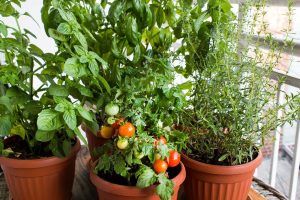Roses, with their stunning blooms and delightful fragrance, have long been cherished as the crown jewels of the garden. If you’re looking to make your roses thrive and flourish this year, you’re in the right place! With over 40 years of gardening experience, Tony Harding Garden Adviser is here to share five essential tips that will help you get the most out of your rose plants. From proper pruning techniques to ensuring optimal care, these valuable insights will enable you to enjoy a breathtaking display of roses in your garden. Let’s dive in!
Tip 1: Choose the right variety for your climate and location
Not all roses are suitable for every climate and location. Some roses are more cold-hardy than others, while some prefer more sun or shade. Before you buy or plant any roses, do some research on the best varieties for your area. You can also consult with your local nursery or garden centre for advice. Some factors to consider are:
– The hardiness zone of your region, which indicates the minimum winter temperature that plants can survive.
– The amount of sunlight and shade that your garden receives throughout the day.
– The soil type and pH level of your garden, which affect the nutrient availability and drainage for your plants.
– The size and shape of your garden, which determine how much space you have for your roses and how they will fit with other plants.
Tip 2: Prune your roses regularly and correctly
Pruning is essential for keeping your roses healthy and productive. Pruning helps to remove dead, diseased or damaged branches, improve air circulation and light penetration, shape the plant and encourage new growth and flowering. However, pruning also requires some skill and knowledge to avoid harming your roses or reducing their flowering potential. Here are some general guidelines for pruning roses:
– Prune your roses in late winter or early spring, before they start to produce new buds. This is the best time to remove any dead or diseased wood and shape the plant for the upcoming season.
– Use sharp, clean and sterilised tools to avoid spreading diseases or damaging the plant tissues.
– Make clean cuts at a 45-degree angle, about 0.5 cm above an outward-facing bud or branch. This will direct the growth away from the centre of the plant and prevent crowding.
– Remove any weak, spindly or crossing branches that compete for space and resources.
– Cut back any old or faded flowers to encourage repeat blooming.
Tip 3: Feed your roses well
Roses are heavy feeders and need regular fertilisation to support their growth and flowering. However, over-fertilising can also cause problems such as leaf burn, excessive foliage growth or reduced flowering. Therefore, it is important to feed your roses with the right amount and type of fertiliser at the right time. Here are some tips for feeding roses:
– Use a balanced fertiliser that contains nitrogen, phosphorus and potassium (NPK), as well as micronutrients such as iron, magnesium and manganese. You can choose between organic or synthetic fertilisers, depending on your preference and availability.
– Apply fertiliser according to the label instructions and the needs of your roses. Generally, you should fertilise your roses once a month from spring to autumn, starting after pruning and stopping about six weeks before the first frost.
– Avoid applying fertiliser directly on the stems or leaves of your roses, as this can cause damage or scorching. Instead, spread it evenly around the base of the plant and water it in well.
– Do not fertilise your roses when they are stressed by drought, heat or pests, as this can worsen their condition.
Tip 4: Water your roses deeply and regularly
Water is vital for your roses’ survival and performance. Water helps to transport nutrients, regulate temperature, prevent wilting and support flowering. However, too much or too little water can also harm your roses or make them susceptible to diseases or pests. Therefore, it is important to water your roses deeply and regularly, but not excessively or inconsistently. Here are some tips for watering roses:
– Water your roses early in the morning or late in the evening, when the temperature is cooler and evaporation is lower.
– Water your roses at the base of the plant, avoiding wetting the foliage or flowers. This will reduce the risk of fungal diseases such as black spot or powdery mildew.
– Water your roses deeply, so that the water reaches at least 15 cm below the surface of the soil. This will encourage deep root growth and drought tolerance.
– Water your roses regularly, depending on the weather conditions and soil moisture level. Generally, you should water your roses once or twice a week during dry periods, but less often during wet periods.
Tip 5: Protect your roses from pests and diseases
Roses are prone to various pests and diseases that can affect their health and beauty. Some of the most common problems are aphids, spider mites, thrips, caterpillars, Japanese beetles, black spot, powdery mildew, rust and rose rosette disease. To protect your roses from these threats, you need to monitor them regularly and take preventive or corrective measures as soon as possible. Here are some tips for protecting roses from pests and diseases:
– Choose resistant varieties that are less likely to be affected by common problems.
– Maintain good hygiene and sanitation in your garden, by removing any fallen leaves, debris or weeds that can harbour pests or diseases.
– Encourage beneficial insects such as ladybirds, lacewings or hoverflies that can prey on or parasitise harmful pests.
– Use organic or natural remedies such as neem oil, insecticidal soap or baking soda to treat mild infestations or infections.
– Use chemical pesticides or fungicides only as a last resort, and follow the label instructions carefully. Avoid spraying during hot or windy days, or when bees or other pollinators are active.
By following these five tips you can enjoy your roses more this year and for many years to come. Roses are not difficult to grow if you give them the right care and attention. They will reward you with their beauty, fragrance and charm. Happy gardening!
As you embark on your journey to create a flourishing rose garden, don’t hesitate to seek the correct advice. With his 40 years of gardening experience, Tony can help you navigate the intricacies of rose care, ensuring your plants reach their full potential. Whether you require a consultation to optimize your garden, a captivating presentation to educate and inspire your social group, or an interactive workshop to enhance your gardening skills, Tony is ready to assist you. Get in touch today to learn more and take the first step towards unlocking the true beauty of your roses. Your garden will thank you, and you’ll enjoy the rewards of vibrant, blooming roses all season long!



